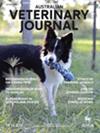Para-aminopropiophenone toxicity in domestic dogs: a description of non-target toxicosis in Victoria, Australia: 13 dogs (2016–2023)
Abstract
Background
PAPP is widely used in Australia as a potent vertebrate bait, with potential for off-target ingestion and poisoning in domestic dogs. Whilst toxicosis and resulting methaemoglobinaemia is anecdotally known to occur, this is the first description in the literature. This study reports thirteen clinical cases of suspected Para-aminopropiophenone (PAPP) toxicity in dogs, with the aim of describing clinical presentation and current management of toxicosis in this species.
Case report
Three veterinary clinics in Victoria provided records of dogs where PAPP toxicity was the likely diagnosis (considering regional exposure, historical information and clinicopathological findings). Pertinent case data was described, and inferences made, based on commonalities and differences. Acute collapse, vomiting and cyanotic or brown mucous membranes were the most common presenting complaints. Marker beads associated with bait were identified in stomach contents from two dogs. All dogs received intravenous methylene blue (MB) with a mean initial dose of 3.8 mg/kg. A higher initial dose of MB (5mg/kg) was associated with a more rapid decline in methaemoglobin concentration. The mean hospitalisation time was 1.6 days with a 77% survival to discharge.
Conclusions
This case series enhances our understanding of the clinical presentation of PAPP toxicity in dogs, and response to treatment with MB. It highlights the consideration of PAPP toxicosis based on clinicopathological findings, even when definitive ingestion (i.e. presence of marker beads) cannot be established. Furthermore, it contributes to our knowledge of MB administration and suggests a fair prognosis for survival of PAPP toxicosis with prompt recognition and treatment.


 求助内容:
求助内容: 应助结果提醒方式:
应助结果提醒方式:


